Overview
Pnoi-phone is an acoustic-based biomedical device/ system utilizing multimodal breath sounds to monitor and diagnose respiratory diseases. The device is designed to be a portable, non-invasive, and user-friendly tool for healthcare professionals, caretakers and patients. Refer Pnoi-phone page for background and more details.
Aim:
- To design an innovative acoustic-based biomedical device for respiratory disease diagnosis and monitoring through multimodal breath sound analysis.
Objectives:
- Conceptualize an easy-to-use, portable device design for capturing breath sounds from multiple chest locations.
- Design the device hardware including components for acoustic capture, signal processing, and data visualization.
- Develop user interface and experience design for healthcare professionals to monitor and interpret data.
Design Process
The design process for the pnoi-phone is an iterative process that involves multiple stages of design, prototyping, and testing. The process is divided into 5 stages, each with its own set of problems and solutions.
Coupler Design to efficiently capture breath sounds from a stethoscope tube with a microphone.
Cross-sectional coupler
The idea is to place the microphone at the end of the stethoscope tube to capture the breath sounds. The coupler is designed to fit the stethoscope tube and hold the microphone in place.
Problem: The ear-piece of the stethoscope is removed in this design, which is an essential part of the stethoscope for auscultation. The user needs audio feedback from the stethoscope to ensure proper placement and contact with the patient's skin.
From this design, by positioning the microphone at various lengths from the stethoscope head, it was confirmed that the microphone should be placed as close to the stethoscope tube as possible to capture the breath sounds effectively.
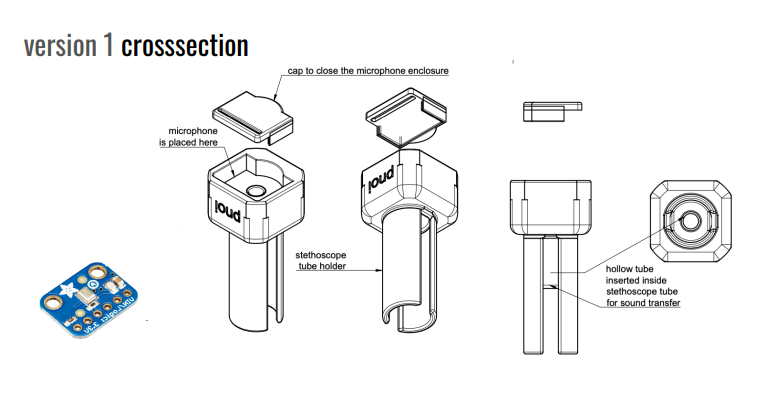
MEMS microphone coupler design.
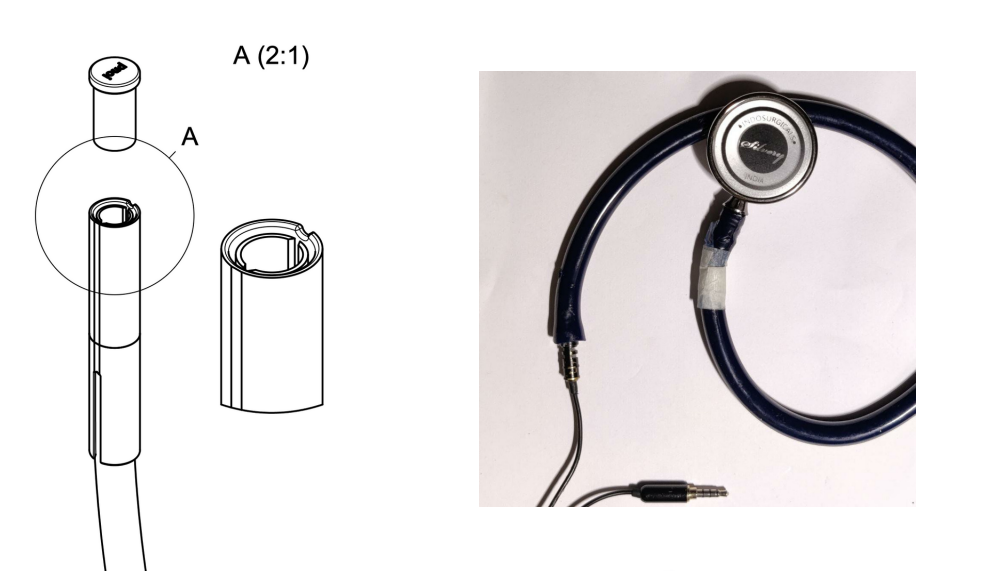
Condenser microphone coupler design.
Flush mount
To solve record the sound without losing the ear-piece, the microphone is placed within the coupler that fits around the tube and positions the microphone exactly on upon a hole made on the tube.
Problem: The microphone placement in this design may not capture the breath sounds effectively due to the distance from the stethoscope tube.
Based on several experiments, this design was successful in capturing the breath sounds retaining the head piece. However, the microphone induced noise due to the vibrations from the stethoscope tube and long wires connecting the microphone to the device was not desirable.
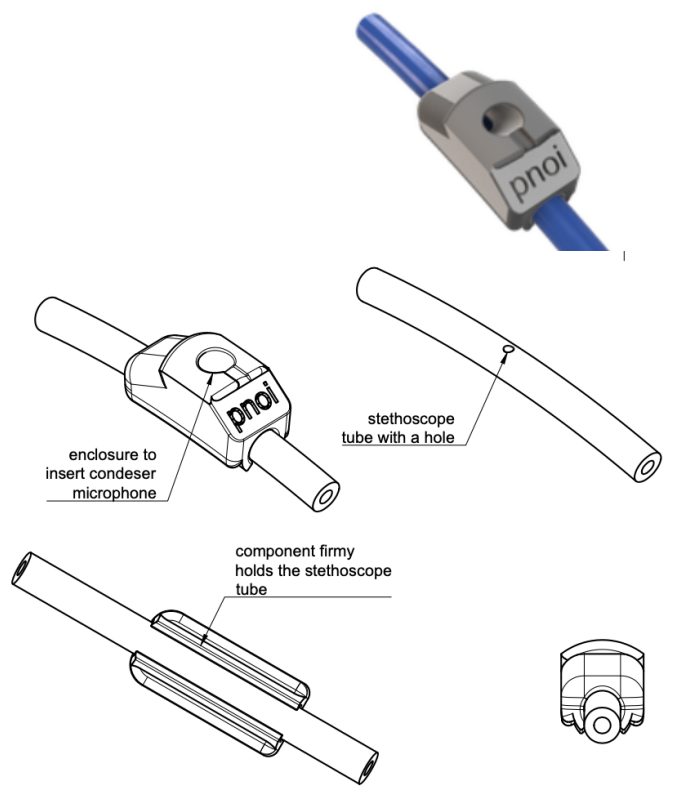
Flush mount design for condenser mic.

Flush mount design for MEMS mic.
Branch coupler
Another coupler design that was considered was a branch coupler that splits the incoming sound into two paths, one for the ear-piece and the other for the microphone. Various types of branch couplers were designed to explore several ways to create two channels from a single sound path.
Problem: Considering the size and complexity, it was not feasible to implement this design. The sound quality significantly degraded due to the split in the sound path and loss in energy. Our in-house acoustic expert suggested flush-mount design was the optimal way to capture the breath sounds from the tube.
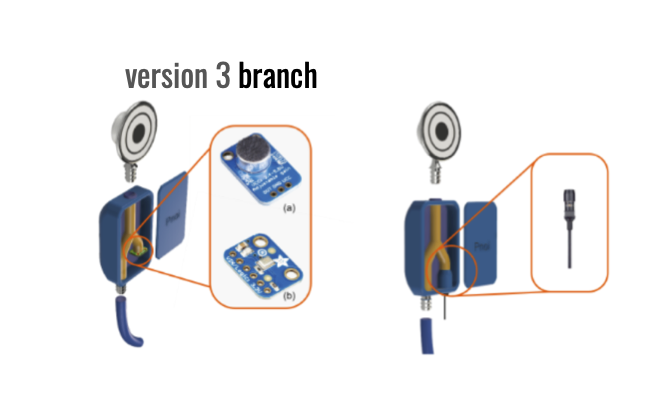
branch coupler design and microphone placement.
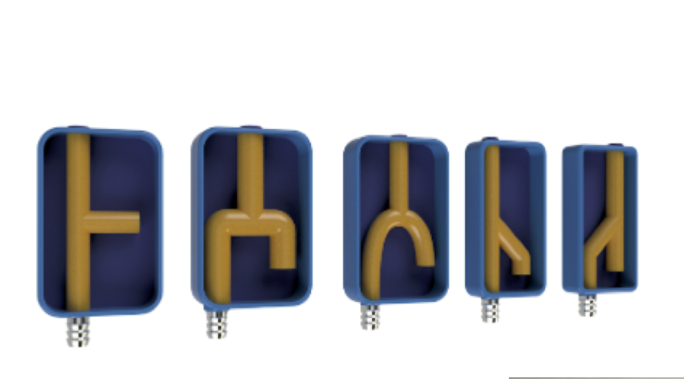
branch coupler variations.
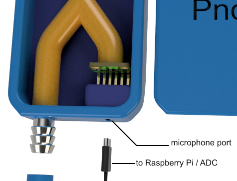
Embodiment of the coupler design
Here, the design of the coupler was a flush mount design that holds the microphone in place and also encloses the electronic components within. This was possible with small size of ESP32 microcontroller and a MEMS microphone for embedded system design.

Embodiment of the coupler design. a) Through hole, b) T-section.
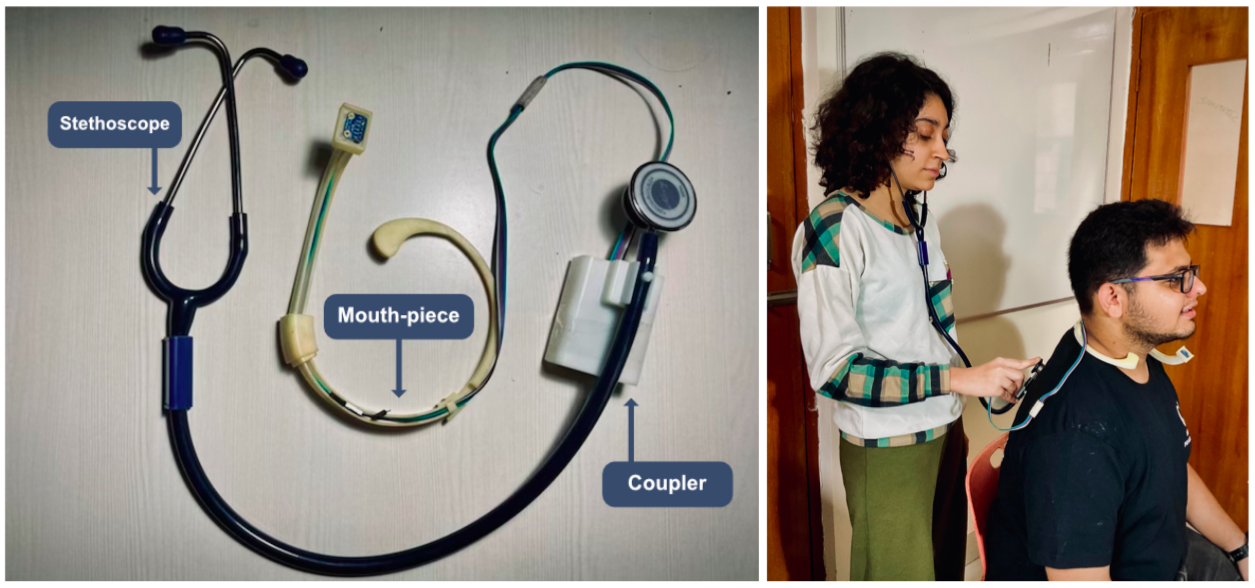
For further details, refer
- Pnoi-phone: Main post for Pnoi-phone project.
- User Research: User research conducted for Pnoi-phone to understand the user needs and requirements.
- Pnoi Corpus: A multimodal breath sounds corpus of patients and controls (recorded with a high-end microphone and digital stethoscope) and corresponding PFT values.
- Pnoi Stor: Data collection protocol, organisation scheme and storage for Pnoi-phone project.
- Embedded System Design: Design and development of embedded system for Pnoi-phone biomedical device.
- Pnoi-phone App: Design and development of Pnoi-phone android app.